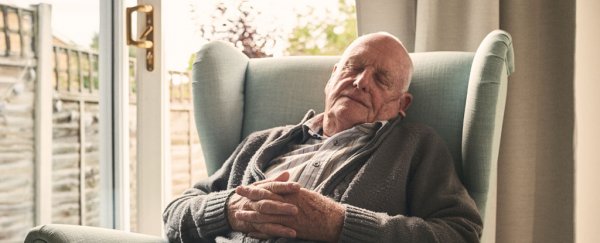Doctors often recommend "power naps" as a way to compensate for a poor night's sleep and help keep alert until bedtime. But for older adults, extensive power naps could be an early sign of dementia.
Research on how napping affects cognition in adults has had mixed results. Some studies on younger adults suggest that napping is beneficial to cognition, while others on older adults suggest it may be linked to cognitive impairment. However, many studies are based on just a single self-reported nap assessment.
This methodology may not be accurate for people with cognitive impairment who may not be able to reliably report when or how long they napped.
As an epidemiologist who studies sleep and neurodegeneration in older adults, I wanted to find out if changes in napping habits foreshadow other signs of cognitive decline.
A study my colleagues and I recently published found that while napping does increase with age, excessive napping may foreshadow cognitive decline.
The link between daytime napping and dementia
Sleep disturbance and daytime napping are known symptoms of mild to moderate Alzheimer's disease and other forms of dementia in older adults. They often become more extreme as the disease progresses: Patients are increasingly less likely to fall asleep and more likely to wake up during the night and feel sleepy during the day.
To examine this link between daytime napping and dementia, my colleagues and I studied a group of 1,401 older adults with an average age of 81 participating in the Rush Memory and Aging Project, a longitudinal study examining cognitive decline and Alzheimer's disease.
The participants wore a watchlike device that tracked their mobility for 14 years. Prolonged periods of inactivity were interpreted as naps.
At the start of the study, approximately 75 percent of participants did not have any cognitive impairment. Of the remaining participants, 4 percent had Alzheimer's and 20 percent had mild cognitive impairment, a frequent precursor to dementia.
While daily napping increased among all participants over the years, there were differences in napping habits between those who developed Alzheimer's by the end of the study and those who did not.
Participants who did not develop cognitive impairment had nap durations that averaged 11 extra minutes per year. This rate doubled after a mild cognitive impairment diagnosis, with naps increasing to 25 extra minutes per year, and tripled after an Alzheimer's diagnosis, with nap durations increasing to 68 extra minutes per year.
Ultimately, we found that older adults who napped at least once or for more than an hour a day had a 40 percent higher chance of developing Alzheimer's than those who did not nap daily or napped less than an hour a day.
These findings were unchanged even after we controlled for factors like daily activities, illness, and medications.
Napping and the Alzheimer's brain
Our study shows that longer naps are a normal part of aging, but only to a certain extent.
Research from my colleagues at the University of California, San Francisco, offers a potential mechanism for why people with dementia have more frequent and longer naps.
By comparing the post-mortem brains of people with Alzheimer's disease with the brains of people without cognitive impairment, they found that those with Alzheimer's had fewer neurons that promote wakefulness in three brain regions.

These neuronal changes appeared to be linked to tau tangles, a hallmark of Alzheimer's in which the protein that helps stabilize healthy neurons form clumps that hamper communication between neurons.
While our study does not show that increased daytime napping causes cognitive decline, it does point to extended naps as a potential signal for accelerated aging. Further research might be able to determine whether monitoring daytime napping could help detect cognitive decline.![]()
Yue Leng, Assistant Professor of Psychiatry, University of California, San Francisco.
This article is republished from The Conversation under a Creative Commons license. Read the original article.
